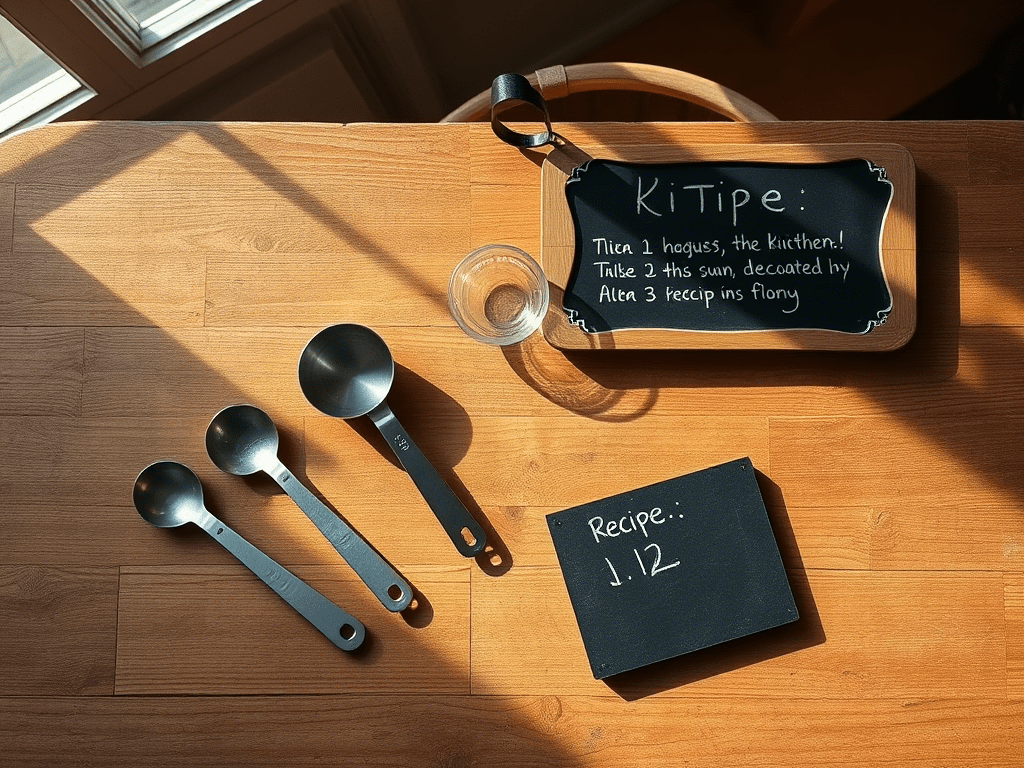Quick Answer: How Many Tablespoons in 1/3 Cup? Simple Conversions You’ll Love
You’re in the middle of a recipe, the oven is preheating, and the instructions suddenly say “add 1/3 cup of oil.” But you only have tablespoons. Now you’re left wondering how many tablespoons are in 1/3 cup, and whether it is safe to just guess.
This type of kitchen conversion might seem small, but it makes a big difference. Using the wrong amount can change the texture, flavor, or even ruin an entire dish. Whether you are measuring olive oil for a marinade or sugar for a cake, precision matters. That is why knowing how many tablespoons are in 1/3 cup is more than just trivia. It is a skill every cook should have.
In this quick guide, we will walk you through the exact conversion of 1/3 cup to tbsp, explain how to measure both dry and liquid ingredients accurately, and show you how to avoid common measuring mistakes. We will also answer questions like how many tablespoons in one cup and how many teaspoons make a tablespoon. Let’s make your kitchen life easier, one measurement at a time.
Table of Contents
Quick Answer: How Many Tablespoons in 1/3 Cup?
The quick and clear answer is:
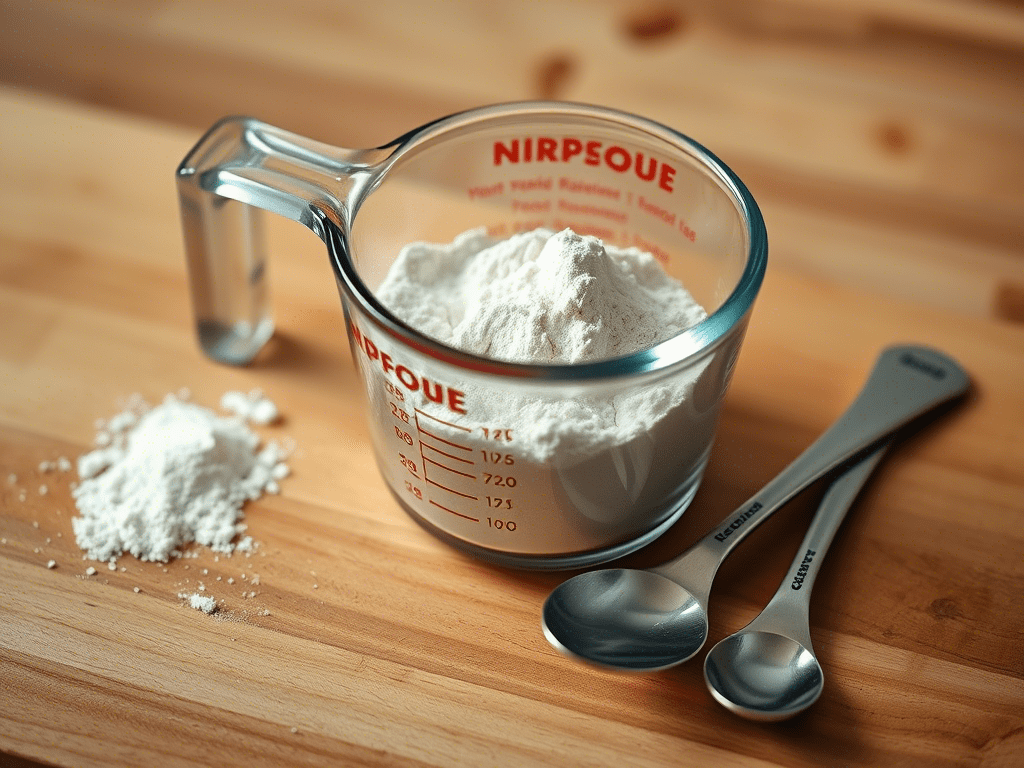
1/3 cup equals 5 tablespoons plus 1 teaspoon
This conversion is based on US standard measurements, which are the most common in recipes across the United States. If you do not have a measuring cup handy, you can simply use:
- 5 tablespoons
- and 1 teaspoon
This will give you the exact equivalent of 1/3 cup in tablespoons. It works whether you’re measuring liquids like oil, milk, or water, or dry ingredients like flour and sugar.
Understanding how many tablespoons in 1/3 cup can be especially useful if you’re working with a recipe that needs to be halved, doubled, or adjusted to serve a different number of people. It helps you stay consistent and prevents over- or under-measuring, which can throw off a recipe completely.
For example, if you are baking cookies and the recipe calls for 1/3 cup of butter, measuring 5 tablespoons plus 1 teaspoon ensures the texture stays soft and chewy — not dry or greasy. This level of accuracy matters whether you’re making sauces, dressings, marinades, or anything that requires precision.
Now that you know the answer, let’s look at why it’s so important to measure ingredients properly and what happens when you don’t.
Why Accurate Measurements Matter in Cooking
Whether you’re baking a cake or cooking dinner on the fly, getting your measurements right is one of the most important parts of any recipe. Small errors in volume, especially when using units like tablespoons and cups, can lead to big changes in flavor, texture, or cooking time.
For example, if you accidentally add 6 tablespoons instead of 5 tablespoons and 1 teaspoon, your 1/3 cup of oil just became too much. That simple mistake could turn your cookies greasy or make your salad dressing too thin.
This is especially true in baking, where every gram or spoonful matters. Knowing how many tablespoons are in 1/3 cup helps you stay in control and ensures consistency in every dish.
It is not just about converting 1/3 cup to tablespoons. Accurate kitchen conversions are useful for doubling or halving recipes, adjusting serving sizes, or switching between US and metric systems. These small calculations make a big difference when aiming for perfect results.
If you have ever wondered how many tablespoons are in one cup or how many teaspoons make a tablespoon, learning these basics will make you faster, more confident, and more accurate every time you cook.
Tablespoon vs Teaspoon: What’s the Difference?
When it comes to kitchen measurements, confusing tablespoons with teaspoons is one of the most common mistakes. Although they sound similar, the volume difference between the two is significant.
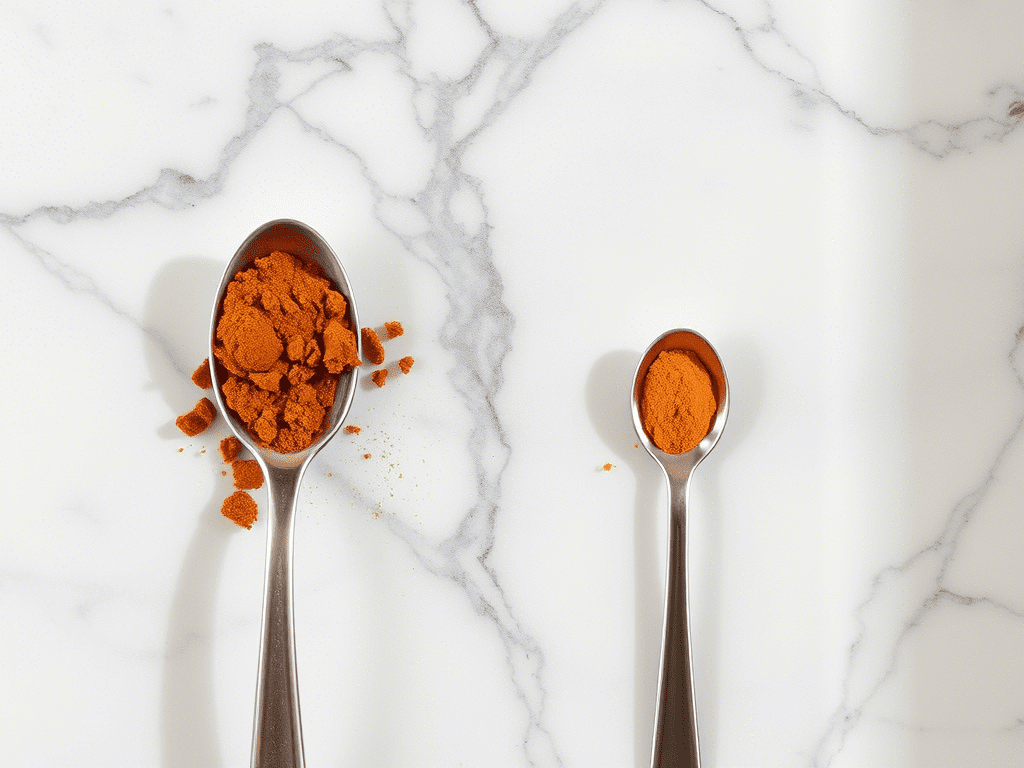
A tablespoon is larger than a teaspoon. In the United States standard system:
- 1 tablespoon = 3 teaspoons
This means that if you mix them up, your recipe could be off by triple the amount. That is a big deal when measuring ingredients like salt, baking soda, or spices.
To keep things simple:
- 1 tsp is best for small amounts like vanilla extract or spices
- 1 tbsp is used for liquids like oil, vinegar, or honey
Understanding this basic conversion also helps when you ask questions like how many tsp make a tbsp, or when you are trying to break down a tablespoon into smaller portions.
Most modern measuring spoon sets include both tablespoons and teaspoons, clearly labeled to avoid mistakes. Investing in a good-quality set can save you from a lot of kitchen confusion.
Now that you know the difference, let’s look at how tablespoons work in other common cup fractions.
How Many Tablespoons in Common Cup Fractions
Once you understand how many tablespoons are in 1/3 cup, it becomes easier to work with other common kitchen conversions. These small measurements play a big role in baking, sauces, and dressings, where accuracy really matters. Knowing these equivalents helps whether you’re doubling a recipe, cutting it in half, or simply working with the tools you have.
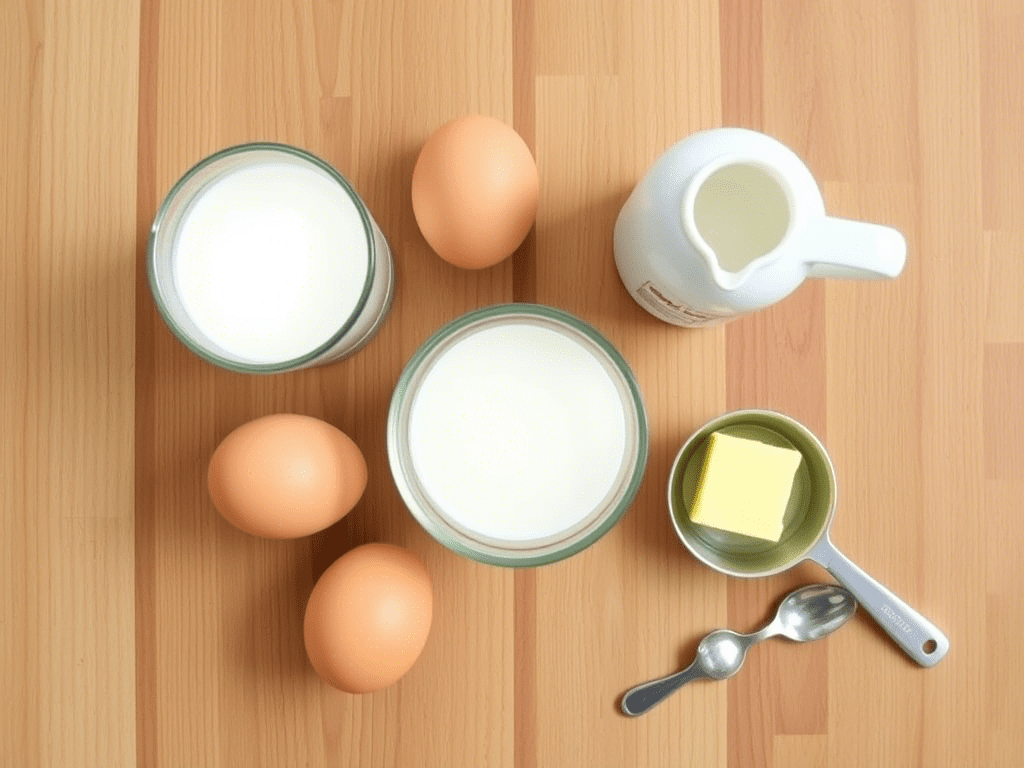
Here’s a quick reference chart using US standard measurements:
| Fraction of a Cup | Tablespoons | Teaspoons |
|---|---|---|
| 1/8 cup | 2 tablespoons | 6 teaspoons |
| 1/4 cup | 4 tablespoons | 12 teaspoons |
| 1/3 cup | 5 tbsp + 1 tsp | 16 teaspoons |
| 1/2 cup | 8 tablespoons | 24 teaspoons |
| 2/3 cup | 10 tbsp + 2 tsp | 32 teaspoons |
| 3/4 cup | 12 tablespoons | 36 teaspoons |
| 1 cup | 16 tablespoons | 48 teaspoons |
For example, if you are making a recipe that asks for 2/3 cup of milk, and you do not have a cup measure, you can simply use 10 tablespoons and 2 teaspoons. If it calls for 1/2 cup of flour, use 8 tablespoons.
These measurements are not only useful for cooking but also for building your understanding of how cup fractions relate to tablespoons and teaspoons. It also answers other common questions like how many tablespoons in one cup and helps you navigate recipes that use different units of measurement.
If you memorize just a few of these, like 1 cup equals 16 tablespoons or 1/3 cup equals 5 tablespoons plus 1 teaspoon, you’ll be much more confident when working in the kitchen.
Coming up next, we will reverse the process and show how to convert tablespoons back into cups for even more flexibility and precision.
How to Convert Tablespoons to Cups
Now that you know how many tablespoons are in 1/3 cup, let’s flip the measurement. What if a recipe gives you the amount in tablespoons and you want to convert that into cups?
This situation is common in recipes where ingredients like oil, sugar, or milk are listed in tablespoons, but you prefer working with cups. Instead of guessing or pulling out a calculator, you can rely on simple, accurate conversions.
Here’s the basic breakdown:
- 1 tablespoon = 1/16 cup
- 2 tablespoons = 1/8 cup
- 4 tablespoons = 1/4 cup
- 5 tablespoons + 1 teaspoon = 1/3 cup
- 8 tablespoons = 1/2 cup
- 12 tablespoons = 3/4 cup
- 16 tablespoons = 1 cup
For example, if you need to measure out 12 tablespoons of milk for a sauce, you can simply use 3/4 cup instead. If a baking recipe calls for 4 tablespoons of melted butter, that’s equal to 1/4 cup. And if you are wondering how much is 4 tablespoons in cups, now you know the direct answer.
These types of conversions not only save you time but also keep your ingredients consistent. Whether you’re doubling a recipe or trying to divide one in half, it is important to convert measurements correctly. Knowing how to move between tablespoons and cups and how 1/3 cup to tbsp fits into this system is part of becoming a more confident cook.
Pro tip: keep a conversion chart or magnet on your fridge for quick access while cooking. It is a small tool that makes a big difference in the kitchen.
Kitchen Tools That Make It Easier
When it comes to accurate measurements, having the right tools can make all the difference. Whether you are converting 1/3 cup to tbsp or figuring out how many tablespoons are in one cup, using the right kitchen gear makes cooking and baking faster, cleaner, and more precise.
Measuring Spoons
A reliable set of measuring spoons is essential in any kitchen. Look for ones that include every key measurement, from 1/4 teaspoon to 1 tablespoon, and even odd sizes like 1/2 tablespoon. When a recipe calls for 5 tablespoons plus 1 teaspoon, which is exactly how many tablespoons in 1/3 cup, having the right spoon sizes makes it quick and stress-free.
Measuring Cups
There are two kinds you should always have: dry measuring cups and liquid measuring cups. Dry cups help you level flour, sugar, or oats perfectly. Liquid cups, usually made of glass or clear plastic, are perfect for pouring oils, milk, or vinegar with accuracy. If you ever wonder how much is 4 tablespoons in cups, having both cup types on hand simplifies everything.
Conversion Chart Magnet
This is a handy tool you can stick to your fridge or cabinet door. It shows fast conversions like 1/3 cup to tbsp, 1/2 cup to tablespoons, and 1 tablespoon to teaspoons. It’s perfect for cooks who don’t want to search for answers online in the middle of cooking.
Digital Kitchen Scale
Scales are perfect when you want extreme accuracy, especially when measuring ingredients like flour or butter. A tablespoon can vary based on how packed an ingredient is, but a scale removes the guesswork. It also helps you work with both volume and weight units.
Organization Tip
Store all your spoons, cups, and scale in a dedicated drawer or container. That way, when you’re asking how many tablespoons are in 1/3 cup, the answer is just a reach away.
Having the proper kitchen tools makes your workflow smoother and helps you avoid common measuring mistakes. Whether you’re just starting out or refining your skills, investing in the right gear pays off with every meal you make.
Real-Life Examples for Better Understanding
It is one thing to know that 1/3 cup equals 5 tablespoons plus 1 teaspoon, but it is even more useful when you see how that applies in real recipes. Below are practical examples that show how converting 1/3 cup to tbsp makes your cooking faster and more accurate.
Example 1: Baking with 1/3 Cup of Sugar
Let’s say your cookie recipe calls for 1/3 cup of white sugar, but your measuring cup is in the dishwasher. Instead of guessing, just use 5 tablespoons and 1 teaspoon. This keeps the sweetness in balance and ensures your cookies have the right texture.
Example 2: Salad Dressing
You’re making a quick vinaigrette and the recipe needs 1/3 cup of olive oil. You can measure out 5 tablespoons and 1 teaspoon. Mix it with vinegar, mustard, and seasoning, and you have a perfect dressing without pulling out a measuring cup.
Example 3: Butter for Pancakes
If a recipe calls for 1/3 cup of melted butter, measure 5 tablespoons plus 1 teaspoon. This is especially helpful when you are melting it directly into a pan or mixing bowl.
Example 4: Converting Tablespoons to Cups
You want to cut a recipe in half, and it calls for 8 tablespoons of milk. You remember from earlier that 4 tablespoons equal 1/4 cup, so you can easily pour the right amount using a cup measure instead of spoons.
Example 5: Scaling a Recipe
You need to double a sauce that calls for 1/3 cup of vinegar. That means you need 10 tablespoons plus 2 teaspoons. Having these conversions memorized or written down helps you stay accurate even when changing recipe sizes.
These examples show that knowing how many tablespoons are in 1/3 cup is not just about memorizing a number. It is about applying that knowledge in everyday cooking to make things simpler, faster, and more precise.
Tips for Measuring Liquid vs Dry Ingredients
When converting measurements like 1/3 cup to tbsp, it is important to know whether you are measuring a liquid or a dry ingredient. While the tablespoon amounts may technically be the same, the tools and techniques you use can affect the accuracy.
Measuring Liquids
For liquids like oil, milk, or vinegar, always use a clear liquid measuring cup with a spout. This helps you pour easily and see the level from the side. If you need to convert 1/3 cup of olive oil to tablespoons, measure 5 tablespoons and 1 teaspoon into the cup, or use a spoon if that is easier for your workflow.
Measuring Dry Ingredients
Dry ingredients such as sugar, flour, or cocoa powder should be measured with dry measuring cups. Scoop the ingredient, then level it off with a flat edge. If a recipe calls for 1/3 cup of sugar, using 5 tablespoons plus 1 teaspoon will give you the exact amount needed.
Use the Right Spoon Type
Tablespoons for liquids should be metal or plastic with deep bowls. For dry ingredients, use flat-bottomed measuring spoons that let you level easily. If you’re wondering how many tablespoons in 1/3 cup of brown sugar, pack it lightly into a dry tablespoon and level it off.
Level, Don’t Scoop
Avoid scooping flour or powders directly from the container with a spoon. Instead, spoon them into the measuring cup or tablespoon and then level off the top. This ensures the volume matches the intended 1/3 cup to tbsp conversion.
Whether you’re measuring liquid honey or dry cocoa, using the correct tools for each type helps you get consistent results. These small habits improve your cooking and make sure your measurements are always correct.
Mistakes to Avoid When Converting
Converting measurements like 1/3 cup to tbsp sounds simple, but there are some common mistakes that can mess up your recipe. Knowing what to avoid can save you time, effort, and prevent you from ruining a good dish.
Mistake 1: Mixing Up Tablespoons and Teaspoons
One of the most common errors is confusing tablespoons with teaspoons. Remember, 1 tablespoon equals 3 teaspoons. If a recipe asks for 5 tablespoons and you use 5 teaspoons instead, you’ll end up with much less than the needed 1/3 cup to tablespoons conversion.
Mistake 2: Using the Wrong Measuring Tools
Do not use a regular dinner spoon as a substitute for a tablespoon. Always use actual measuring spoons or cups. If you want to get how many tablespoons are in 1/3 cup accurately, eyeballing it won’t cut it.
Mistake 3: Forgetting to Level Dry Ingredients
When measuring dry ingredients like flour or sugar, always level off your spoon or cup with a straight edge. If you heap tablespoons instead of leveling them, your 1/3 cup to tbsp measurement will be off.
Mistake 4: Not Checking the Measurement System
US measurements are not the same as UK or metric. If a recipe calls for 1/3 cup to tbsp and you’re using international tools, double-check the standard. A US tablespoon is 14.79 mL, while a UK tablespoon is 15 mL — a small difference that matters in baking.
Mistake 5: Skipping the Teaspoon in the 1/3 Cup Conversion
Many people remember that 1/3 cup is 5 tablespoons, but forget the additional 1 teaspoon. That missing teaspoon can throw off your recipe, especially with strong ingredients like vinegar, baking soda, or soy sauce.
Avoiding these small but impactful mistakes ensures your measurements are accurate and your food turns out just right. Whether you’re wondering how many tablespoons are in 1/3 cup or how much is 4 tablespoons in cups, the key is precision and the right technique.
Printable Conversion Chart
Having a quick reference guide in your kitchen can save you a lot of time, especially when you need to know how many tablespoons in 1/3 cup or how much 4 tablespoons equals in cups. Instead of searching online every time, a printable chart gives you instant answers while you’re cooking or baking.
Here’s a simple and clear conversion table you can print or screenshot:
| Cups | Tablespoons | Teaspoons |
|---|---|---|
| 1/8 cup | 2 tablespoons | 6 teaspoons |
| 1/4 cup | 4 tablespoons | 12 teaspoons |
| 1/3 cup | 5 tbsp + 1 tsp | 16 teaspoons |
| 1/2 cup | 8 tablespoons | 24 teaspoons |
| 2/3 cup | 10 tbsp + 2 tsp | 32 teaspoons |
| 3/4 cup | 12 tablespoons | 36 teaspoons |
| 1 cup | 16 tablespoons | 48 teaspoons |
This chart helps you answer questions like:
- How many tablespoons are in 1/3 cup?
- 1/3 cup to tbsp? It’s 5 tablespoons and 1 teaspoon.
- How many tablespoons are in one cup? 16 tablespoons exactly.
- How much is 4 tablespoons in cups? That would be 1/4 cup.
You can tape this chart inside a cupboard door, stick it on your fridge, or keep a digital copy on your phone. It’s a small tool that gives you quick confidence when adjusting recipe quantities.
Having conversions like 1/3 cup to tablespoons at your fingertips turns any recipe into an easy task, even when you’re short on tools or working with limited ingredients.
FAQ (Frequently Asked Questions)
How many tablespoons in 1/3 cup?
There are exactly 5 tablespoons plus 1 teaspoon in 1/3 cup. This is one of the most searched conversions because many recipes list ingredients in cups, while home cooks often measure using tablespoons. Whether you’re working with flour, sugar, or oil, knowing how many tablespoons in 1/3 cup gives you an edge in the kitchen.
Can I just use 5 tablespoons for 1/3 cup?
Not quite. While 5 tablespoons get you close, the accurate conversion is 1/3 cup to tbsp = 5 tablespoons plus 1 teaspoon. Skipping that last teaspoon can slightly affect the final texture or flavor, especially in baking or salad dressings.
How many tablespoons are in one cup?
There are 16 tablespoons in one cup using US standard measurements. This means:
- 1/2 cup = 8 tablespoons
- 1/4 cup = 4 tablespoons
- 1/3 cup = 5 tablespoons + 1 teaspoon
Understanding this helps when you’re adjusting quantities or scaling recipes.
How much is 4 tablespoons in cups?
4 tablespoons equals 1/4 cup. This is a key conversion in cooking sauces, marinades, and baking. If you’re doubling 1/4 cup, you’ll need 8 tablespoons, which is 1/2 cup.
How many teaspoons make a tablespoon?
1 tablespoon equals 3 teaspoons. So if you need half a tablespoon, that would be 1 and 1/2 teaspoons. This conversion is especially handy when a recipe calls for small but precise amounts of ingredients like salt, baking powder, or spices.
Is 1/3 cup to tbsp the same for dry and liquid ingredients?
Yes, the 1/3 cup to tablespoons conversion remains the same in volume whether you are measuring dry ingredients like flour or wet ingredients like milk. The important thing is to use the correct tools — dry measuring cups for dry ingredients and liquid measuring cups for liquids.
Can I multiply or divide 1/3 cup easily?
Definitely. If you want to double 1/3 cup, you would use 10 tablespoons and 2 teaspoons. If you want to cut 1/3 cup in half, you’ll need 2 tablespoons and 2 teaspoons. These adjustments are easy once you understand how 1/3 cup equals 5 tablespoons plus 1 teaspoon.
Why is it important to know these conversions?
Knowing how many tablespoons in 1/3 cup, or how much 4 tablespoons equals in cups, helps you avoid measuring errors, especially when you’re working without full measuring cup sets. It also makes following recipes from different sources easier and more accurate.
Final Thoughts
Understanding how many tablespoons are in 1/3 cup is essential for precise cooking and baking. As we’ve discussed, 1/3 cup equals 5 tablespoons plus 1 teaspoon. This knowledge is crucial when adjusting recipes or when you don’t have the exact measuring tools on hand.
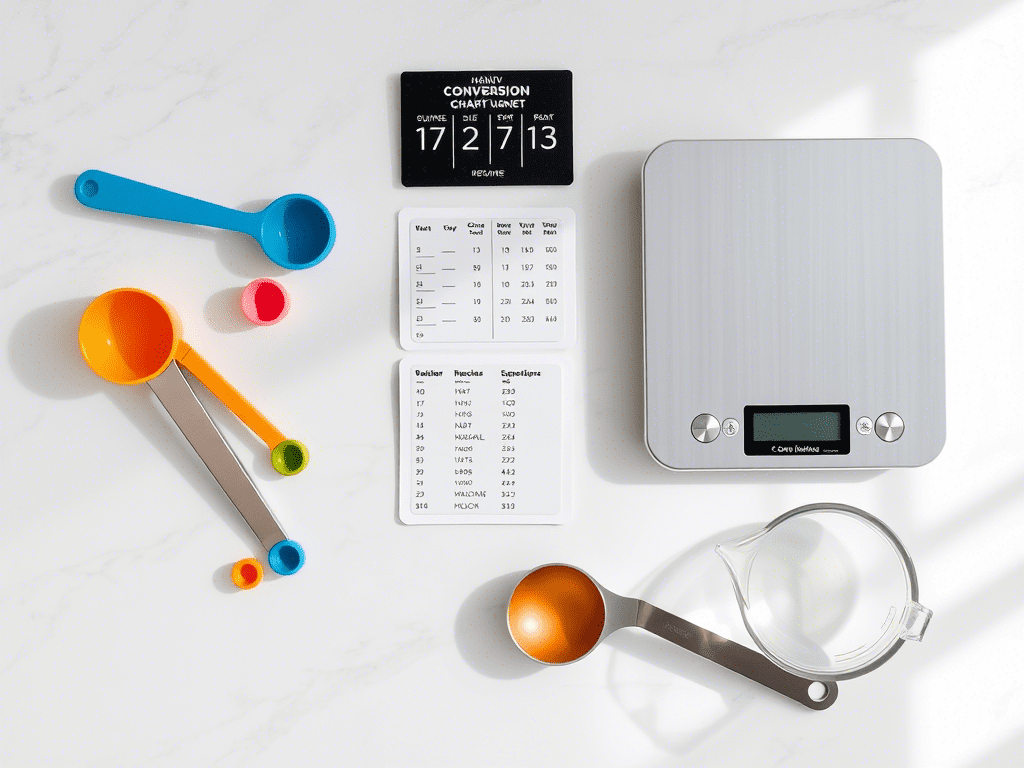
Recipes to Try Next
Now that you’re equipped with this conversion knowledge, here are some recipes where accurate measurements are key:
- 5-Minute Sweet and Sour Sauce Recipe: Ensure the perfect balance of flavors by accurately converting 1/3 cup to tablespoons for ingredients like vinegar and sugar.
- Smoothie Recipes That Wow: 9 Healthy & Tasty Blends: Achieve the right consistency by understanding how much is 4 tablespoons in cups when adding nut butters or sweeteners.
- Wooden Salad Bowl: 10 Best Picks and Why Every Kitchen Needs One: Enhance your salad presentations with the right tools and measurements.
Kitchen Tools You’ll Love
To make your cooking experience smoother, consider these kitchen tools:
- Spring Chef Stainless Steel Magnetic Measuring Spoons Set of 8: A set that includes all the spoon sizes you need, easy to level and store.
- OXO Good Grips 2-Cup Angled Measuring Cup: Perfect for measuring wet ingredients without bending over.
- Greater Goods High Capacity Kitchen Scale: For recipes requiring weight measurements, a digital scale complements your knowledge of volume conversions.
- KitchenAid KE058OHAQA Classic Measuring Cups Set of 4: Includes 1/4 cup, 1/3 cup, 1/2 cup, and 1 cup sizes for quick scooping.
- Kitchen Conversion Chart Magnet: Stick it on your fridge and always have conversions like how much is 4 tablespoons in cups at your fingertips.
As an Amazon Associate, we may earn from qualifying purchases at no extra cost to you.
By mastering these conversions and using the right tools, you’ll enhance your culinary skills and ensure delicious results every time. Bookmark this guide, print the conversion chart, and level up your cooking skills today.

